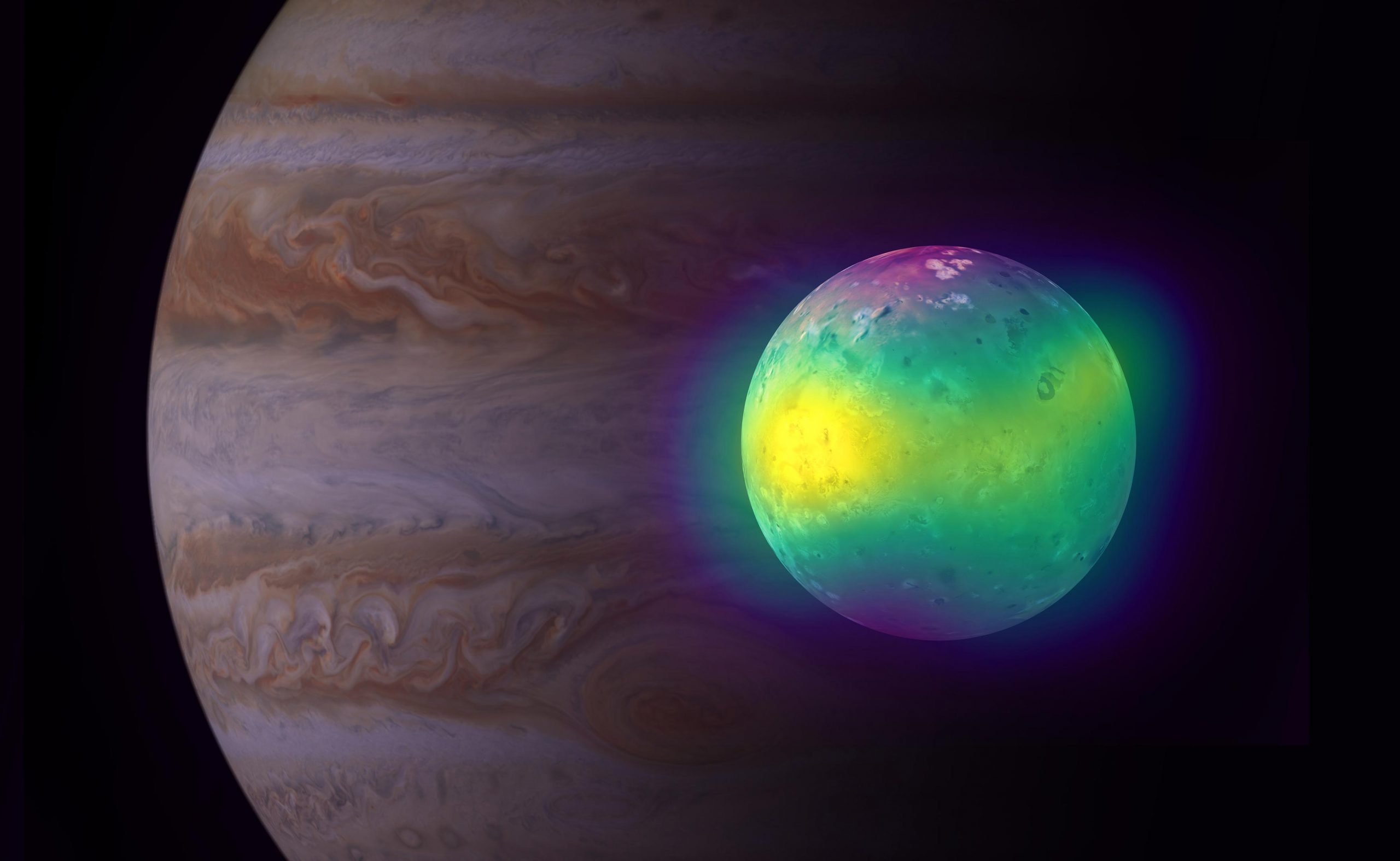
Composite image showing Jupiter’s moon Io in radio (ALMA), and optical light (Voyager 1 and Galileo).
The ALMA images of Io show for the first time plumes of sulfur dioxide (in yellow) rise up from its volcanoes.
New radio images from the Atacama Large Millimeter/submillimeter Array (ALMA) show for the first time the direct effect of volcanic activity on the atmosphere of Jupiter’s moon Io.
Although it is extremely thin – about a billion times thinner than Earth’s atmosphere – Io has an atmosphere that can teach us about Io’s volcanic activity and provide us a window into the exotic moon’s interior and what is happening below its colorful crust.
Previous research has shown that Io’s atmosphere is dominated by sulfur dioxide gas, ultimately sourced from volcanic activity.
“Is it volcanic activity, or gas that has sublimated (transitioned from solid to gaseous state) from the icy surface when Io is in sunlight?“.
To distinguish between the different processes that give rise to Io’s atmosphere, a team of astronomers used ALMA to make snapshots of the moon when it passed in and out of Jupiter’s shadow (they call this an “eclipse”).
This video shows images of Jupiter’s moon Io in radio (made with ALMA), and optical light (made with Voyager 1 and Galileo missions).
The ALMA images were taken when Io passed into Jupiter’s shadow in March 2018 (eclipse), and from Jupiter’s shadow into sunlight in September 2018.
These radio images for the first time show plumes of sulfur dioxide (in yellow) rise up from the volcanoes on Io.
“When Io passes into Jupiter’s shadow, and is out of direct sunlight, it is too cold for sulfur dioxide gas, and it condenses onto Io’s surface.
Based on the snapshots, they calculated that active volcanoes directly produce 30-50 percent of Io’s atmosphere.
The ALMA images also showed a third gas coming out of volcanoes: potassium chloride (KCl).
“By studying Io’s atmosphere and volcanic activity we learn more about not only the volcanoes themselves, but also the tidal heating process and Io’s interior,” added Luszcz-Cook.
A big unknown remains the temperature in Io’s lower atmosphere.
“To measure the temperature of Io’s atmosphere, we need to obtain a higher resolution in our observations, which requires that we observe the moon for a longer period of time.
We have done this previously with radio images of Jupiter made with ALMA and the Very Large Array (VLA).”.